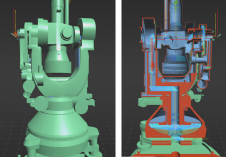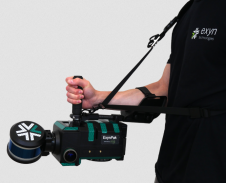Milena is Disappointed
In 1994 the European Commission saw the need for a European involvement in global satellite navigation. Twenty years have passed since then; what has Europe achieved? After eight years of scuffling, the EC agreed on the launch of the European civil satellite navigation programme, Galileo. That was in 2002. Progress was steady: Galileo’s Giove A was put into orbit in late 2005 and Giove B followed in April 2008. Two initial operational capability (IOC) satellites became operational in October 2011, with the second pair launched one year later. These four satellites enabled validation of the Galileo concept both in space and on Earth.
There was much disagreement among the EU member states from the start, but the blade of hope that amalgamated the clashing minds was that Galileo would become a commercial success because users would be willing to pay for superior services. Together with GPS, Galileo would enable better coverage and higher reliability, also indoors and in urban canyons, which is key for safety-critical applications. But that hope was in vain. Cooperation is difficult, especially when it concerns a broad spectrum of bureaucratic institutions. The plethora of issues raised can be grouped into two main categories: converging interests and funding. The US was unhappy with a competitor which purely focused on the civilian user. At that time, selective availability had not yet been turned off, Beidou was still on China’s to-do list of upcoming projects while Glonass was in an advanced stage of decomposition. Another GNSS, especially from such a well-developed region as Europe, would threaten the US’s space hegemony. The European countries with strong trade relations with the US agreed with the claims of Galileo’s superfluity and opposed it strongly.
应该如何资助一个数十亿欧元的项目?在九十年代中期发现的灵丹妙药是公私伙伴关系(PPP)。说服银行和跨国公司投资三分之二的部署成本,这是由收入通过高精度服务的收入引发的(低精确服务将是免费的,并向所有公民开放)。该商业模式在2007年宣布其军队并不介意免费使用GPS的其他地区。PPP蒸发和伽利略的负担靠在欧盟纳税人的肩膀上。到2010年,该项目曾经作为经济增长的催化剂销售,预算超出了三倍,而没有筹集一分钱,又落后了近十年。该系统不会在2020年之前运行,并且将使欧盟纳税人超过2000亿欧元。另一个问题是时间范围的差异。公共部门的时间表在各个欧盟国家阵风中爆发了政治风,而政治偏好可能会随着时间的流逝而改变 - 保证项目将需要数十年。私人部分无法耐心等待利润实现。
为了赢得欧盟纳税人的同情,2011年,欧共体组织了一场绘图竞赛,开放了2000年,2001年和2002年出生的孩子。毕竟,我们的未来掌握在我们青年时代。伽利略卫星将以27名获奖者的名字命名 - 一个欧盟国家(克罗地亚直到2013年才成为欧盟成员)。因此,2011年和2012年发射的四颗卫星以Thijs,Natalia,David和Sif的名字命名。2014年8月发射的两颗卫星 - 多尔萨和米琳娜 - 被注入了错误的轨道。然而,来自德国的多尔萨(Doresa Demay)可以感到自豪,因为工程师一旦达到目标轨道,工程师成功地开启了多尔萨(Doresa)的导航有效载荷。但是,来自爱沙尼亚的Milena Kaznatsejeva将仍然失望。她的卫星将继续漫无目的地盘旋。这将是202X年,伽利略信号最终将用于定位和导航目的。有些人称该项目为教科书示例,说明如何不运行大型基础架构项目。
使您的收件箱更有趣。Add some geo.
Keep abreast of news, developments and technological advancement in the geomatics industry.
免费注册
























